As we know, penguins can’t fly even like a duck or a hen. Then why do penguins have feathers? Have you ever thought about it before? Many of you often ask about it and that’s the reason we look forward to learning the fact.
And we have found some surprising facts that will definitely amaze you if you love birds.
Unlike the feathers of most birds, penguin feathers are shorter and stiffer. This gives them a more compact and streamlined appearance, which helps them swim more efficiently in the water.
Additionally, penguin feathers are also denser than those of other birds, which helps them trap more air to provide insulation.
Well, let’s dive into a deeper discussion on this fact. Make sure not to skip anything.
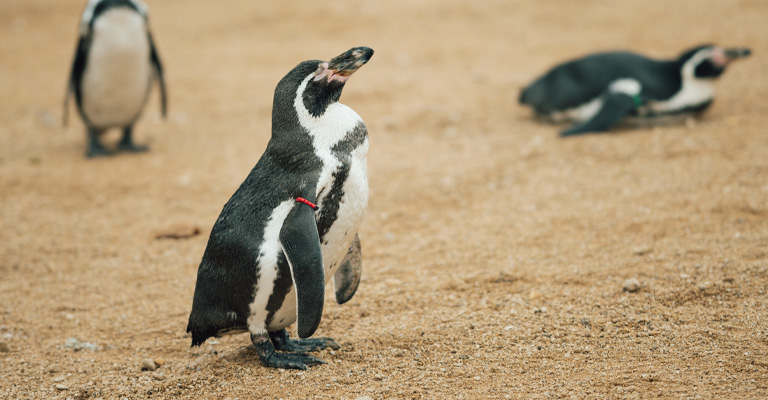
Structure and Composition of Feathers
Feathers are complex structures found in various bird species, including penguins. They serve multiple functions, such as insulation, flight, and display.
The structure and composition of feathers play a crucial role in enabling these functions. Here is an overview of the structure and composition of feathers:
Shaft
The central part of the feather is called the shaft or rachis. It provides the main structural support and runs along the length of the feather.
Vane
The shaft branches out into two sections, known as the vanes, which lie on either side. The vane consists of numerous interlocking barbs.
Barbs
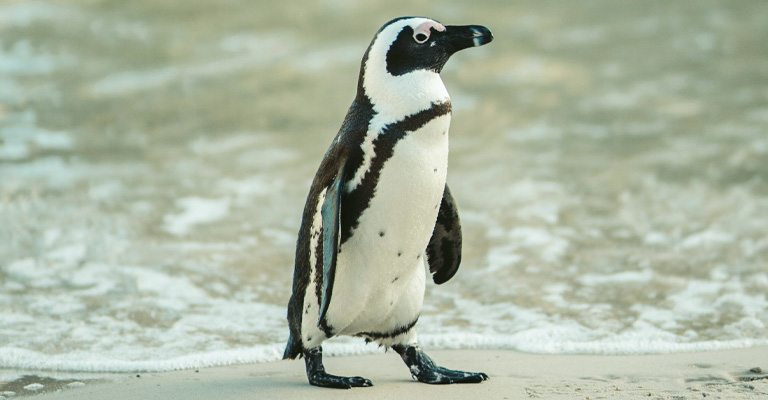
The barbs are parallel branches that extend from the rachis and form the majority of the feather’s surface area. Each barb contains tiny structures called barbules.
Barbules
Barbules are small, hook-like structures that project from the sides of barbs. They interlock with corresponding barbules on adjacent barbs, forming a tightly-knit surface. This interlocking arrangement helps maintain the feather’s integrity and shape.
Hooklets
Hooklets are even smaller structures found on barbules. They are responsible for the secure interlocking of barbules. When the hooklets on adjacent barbules catch together, they create a cohesive and smooth vane surface.
Feather Filaments
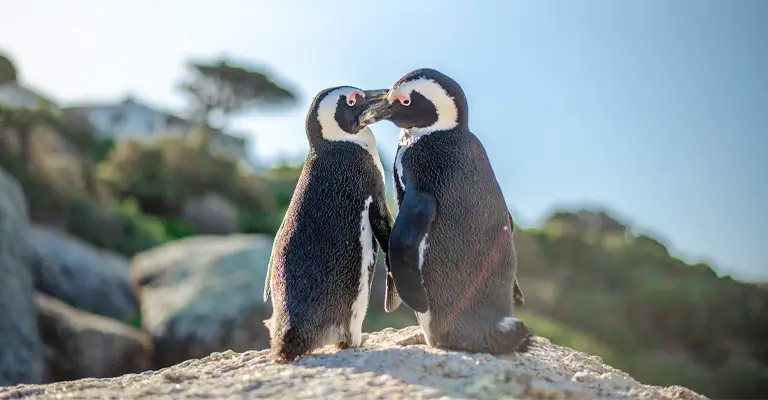
Feathers consist of a central hollow shaft, which is made up of a series of cylindrical filaments. These filaments are lightweight yet strong, providing structural support to the feather.
Keratin
Feathers are composed primarily of keratin, a protein that is also found in human hair and nails. The keratin in feathers gives them strength, flexibility, and resilience.
Pigmentation
Feathers can have various pigments, which give them color. Melanin, carotenoids, and porphyrins are common pigments found in feathers. The arrangement and concentration of these pigments determine the feather’s coloration.
The intricate structure and composition of feathers contribute to their functional properties, such as insulation, flight aerodynamics, and display capabilities.
Penguins, specifically, have unique adaptations in their feathers that allow them to thrive in their cold aquatic habitats.
Unique Adaptations of Penguin Feathers
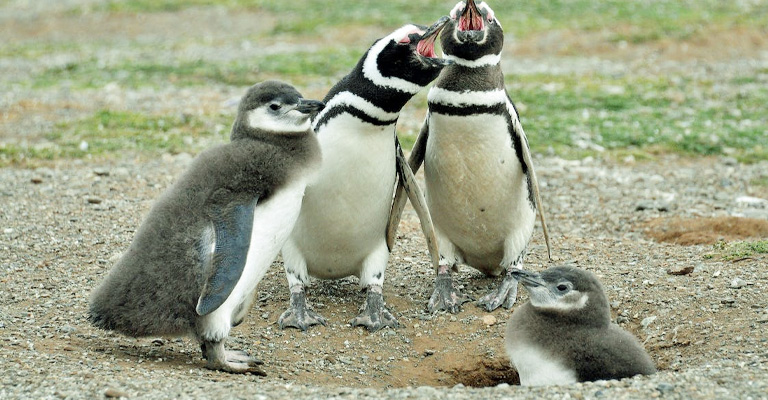
Penguin feathers possess several unique adaptations that enable these flightless birds to survive and thrive in their cold, aquatic environments. These adaptations include:
Dense Feather Coverage
Penguins have a high feather density, with around 100 feathers per square inch. This dense coverage helps to provide excellent insulation, keeping the penguins warm in frigid waters and extreme temperatures.
Waterproofing
Penguin feathers have a special structure that allows them to be highly waterproof. Each feather is coated with a waxy substance and overlaps with neighboring feathers, creating a barrier that prevents water from reaching the bird’s skin.
This waterproofing property helps penguins stay dry and maintain their body temperature while swimming and diving.
Feather Flexibility
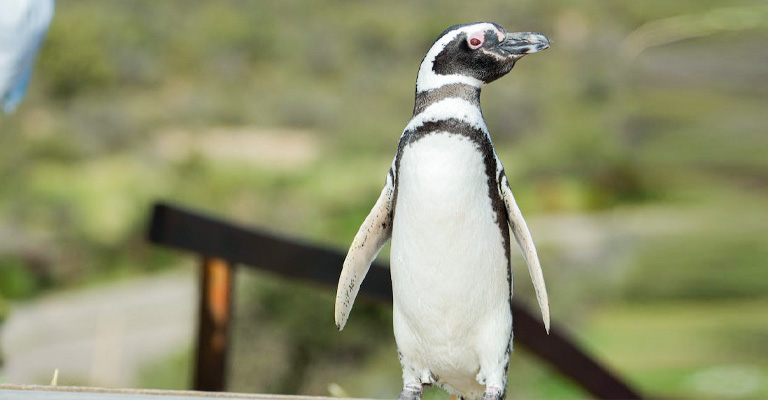
Penguin feathers are flexible, allowing the birds to move and swim with agility. The flexibility of their feathers reduces drag and resistance in the water, enabling efficient and streamlined swimming.
Feather Structure
The feathers of penguins have a flattened shape compared to the more rounded shape of flighted birds. This flattened structure helps penguins glide smoothly through the water, reducing turbulence and improving hydrodynamics.
Feather Coloration
Penguins exhibit unique coloration patterns on their feathers, which serve various purposes. Some penguins have a black back and white underside, which provides camouflage from predators both above and below the water’s surface.
Additionally, the distinct color patterns on the head and neck of certain penguin species can help individuals recognize and identify each other during social interactions and mating rituals.
Feather Renewal
Penguins go through an annual molting process, where they shed and replace their old feathers. This renewal helps maintain the integrity and functionality of their plumage, ensuring that their feathers remain in optimal condition for insulation, waterproofing, and efficient swimming.
Why Do Penguins Have Feathers?
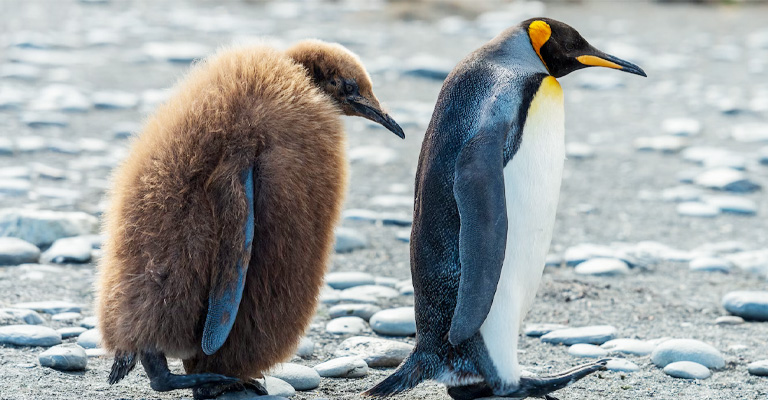
Penguins have feathers for several important reasons. The evolution of feathers in penguins has been driven by their unique aquatic lifestyle and the need to survive in cold environments.
Here are some reasons why penguins have feathers:
Insulation
Feathers serve as excellent insulation for penguins. The thousands of small, stiff feathers that cover their bodies trap air between them, creating a layer of insulation.
This trapped air acts as a barrier between the penguin’s warm body and the cold water, helping to maintain its body temperature.
The insulation provided by feathers is crucial for penguins, as they inhabit some of the coldest regions on Earth, such as Antarctica.
Streamlining
Penguin feathers are specially adapted for life in the water. They are shorter and stiffer compared to the feathers of most other birds, which makes penguins more streamlined in the water.
The streamlined shape reduces drag and allows penguins to move through the water with greater efficiency, making them skillful and agile swimmers.
Buoyancy
Feathers also contribute to the buoyancy of penguins. The trapped air in their feathers not only provides insulation but also adds buoyancy, helping penguins to float on the water’s surface.
This buoyancy allows penguins to rest and conserve energy without fully submerging themselves.
Waterproofing
Penguins spend a significant amount of time in the water, and their feathers play a vital role in keeping them dry. The outer layer of feathers has special waterproofing adaptations.
These feathers have a coating of oil produced by a gland near the base of the tail. When penguins preen their feathers, they spread this oil across their plumage, making it more water-resistant.
The waterproofing properties of feathers help prevent water from saturating the underlying down feathers, keeping the penguin’s body dry and allowing them to maintain their body heat.
Display and Communication
Feathers in penguins also serve social and reproductive functions. For example, the genus of crested penguins has a distinct crest of yellow ornamental head feathers.
These crests play a role in courtship displays and mate selection, as they can indicate the individual’s health and genetic quality.
Feathers can also be used for visual communication between penguins, helping them establish territories or convey aggression or submission.
What Are The Feathers Of A Penguin Called?
The feathers of a penguin are commonly referred to as plumage. Penguin plumage consists of two main types of feathers: contour feathers and down feathers.
Contour Feathers
These are the outer feathers that give the penguin its streamlined shape. Contour feathers are relatively stiff and have interlocking barbs that help maintain the penguin’s streamlined form in the water. The outer contour feathers are waterproofed with a coating of oil to keep the penguin dry.
Down Feathers
These are the soft, fluffy feathers found underneath the contour feathers. Down feathers are responsible for providing insulation by trapping air close to the penguin’s body, which helps maintain body temperature in cold environments.
These feathers are also responsible for giving penguin chicks their fluffy appearance. Both types of feathers, contour and down, work together to provide penguins with the necessary insulation, buoyancy, and streamlined shape for their aquatic lifestyle.
How Many Feathers Does A Penguin Have?
A penguin typically has a remarkable number of feathers, with estimates ranging from 12,000 to 80,000 feathers on a single bird, depending on the species.
These feathers are densely packed across the penguin’s body, averaging around 60 feathers per square inch. This abundance of feathers serves multiple essential functions for penguins.
The dense feather coverage provides excellent insulation, trapping air to maintain body temperature in frigid climates.
Additionally, the feathers are coated with waterproofing oil, keeping the penguin dry and allowing it to navigate the icy waters without losing heat.
The sheer quantity of feathers is a remarkable adaptation that helps penguins thrive in one of the harshest environments on Earth.
FAQs
The average lifespan of a penguin varies depending on the species but generally ranges from 15 to 25 years. Some species, such as the Emperor penguin, can live for up to 20 years in the wild.
Some species of penguins do migrate, while others are non-migratory. For example, Emperor penguins do not migrate, while Adelie penguins do.
Yes, penguins have several natural predators including leopard seals, orcas, and sea lions. Some species, such as the Galapagos penguin, also face predation from land animals like snakes and rats.
Yes, penguins lay eggs as part of their breeding cycle. The number of eggs laid can vary depending on the species, with some species laying only one egg per breeding season, while others may lay up to two.
Yes, penguins have several adaptations that help them dive and swim underwater. These include a dense layer of feathers for insulation, a streamlined body shape for reducing drag, and flippers for propulsion. Penguins also have specialized blood vessels in their flippers that help to conserve heat while they’re underwater.
Conclusion
Penguins’ unique adaptations, such as their shorter and stiffer feathers providing streamlining and buoyancy, are crucial for their survival in the cold Antarctic seas.
The trapped air in their feathers acts as thermal insulation, contributing 80% to 84% of their insulation properties. Preening behavior maintains feather integrity and insulation.
Future research could investigate how penguins’ feathers and insulation change over time, as well as variations between species.
However, we are about to take out leave for today. Hopefully, you understand the fact well. Please leave a comment if anything else bothers you about this fact. Thank you for your time.